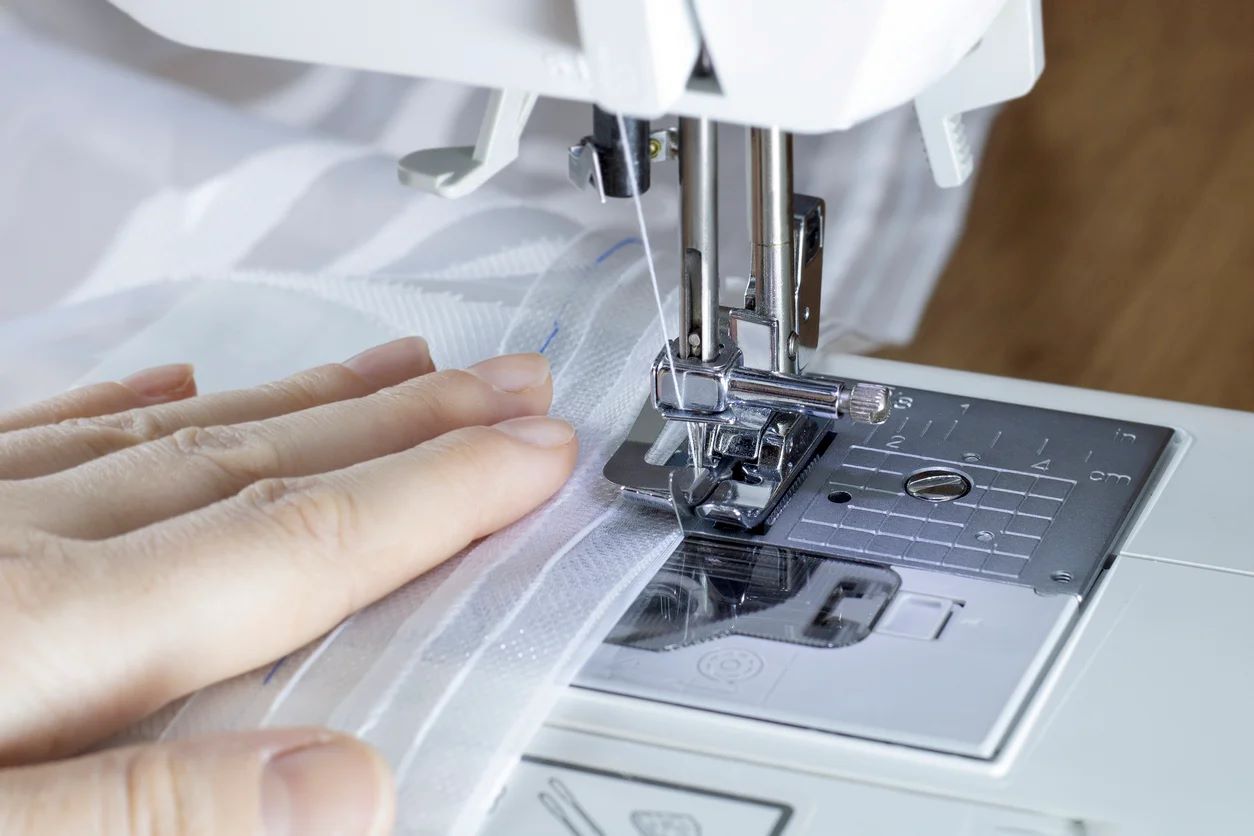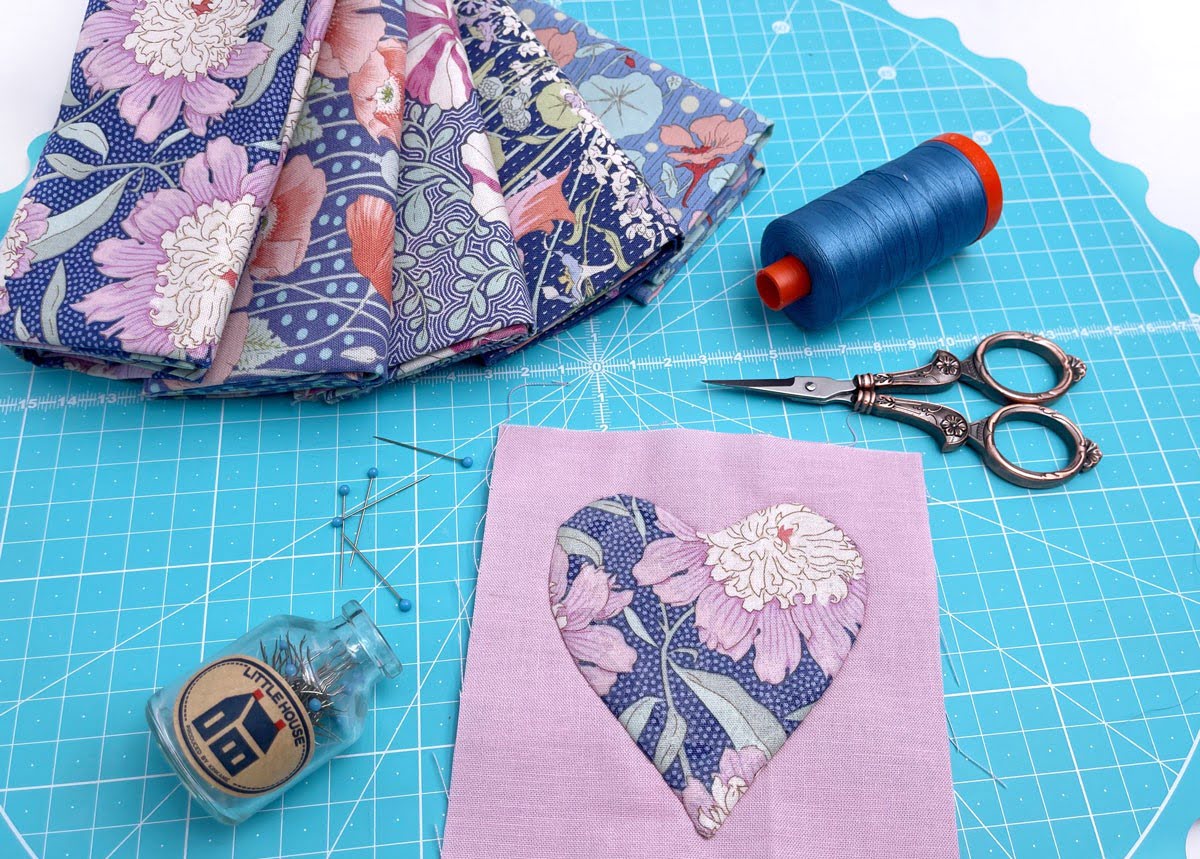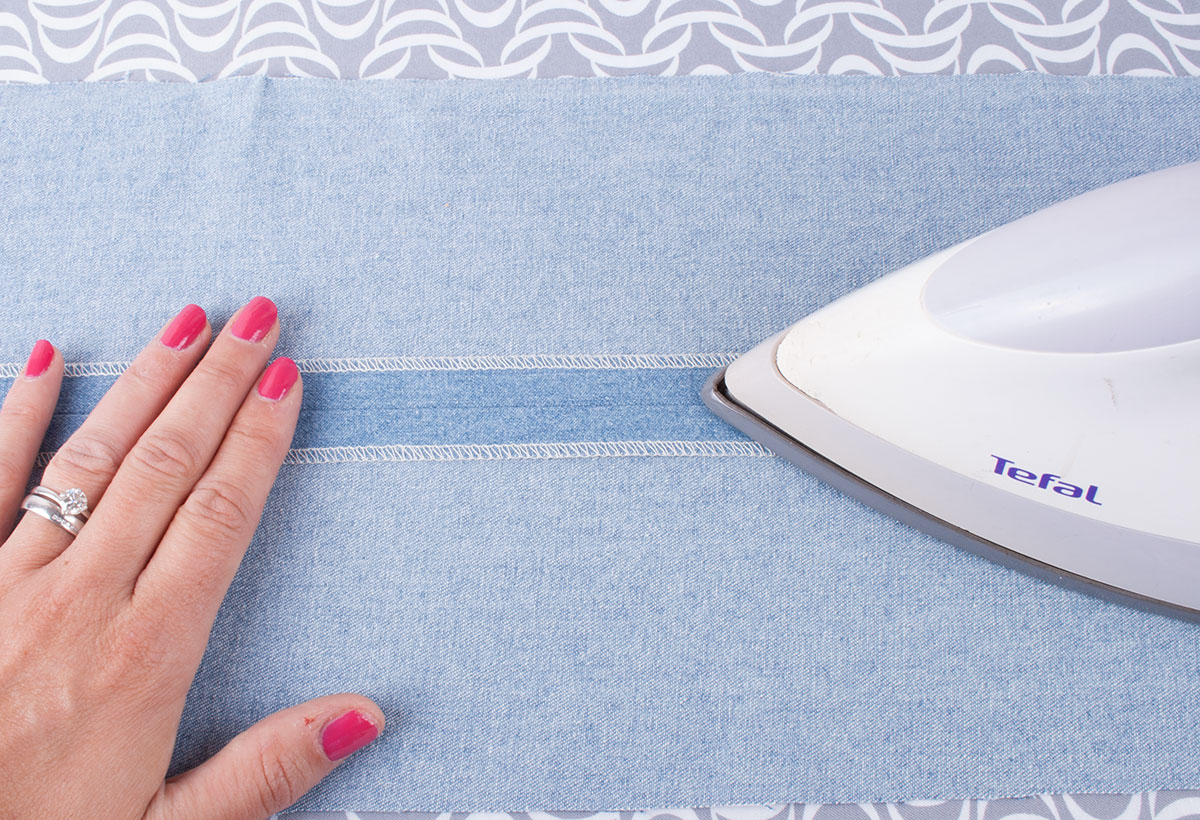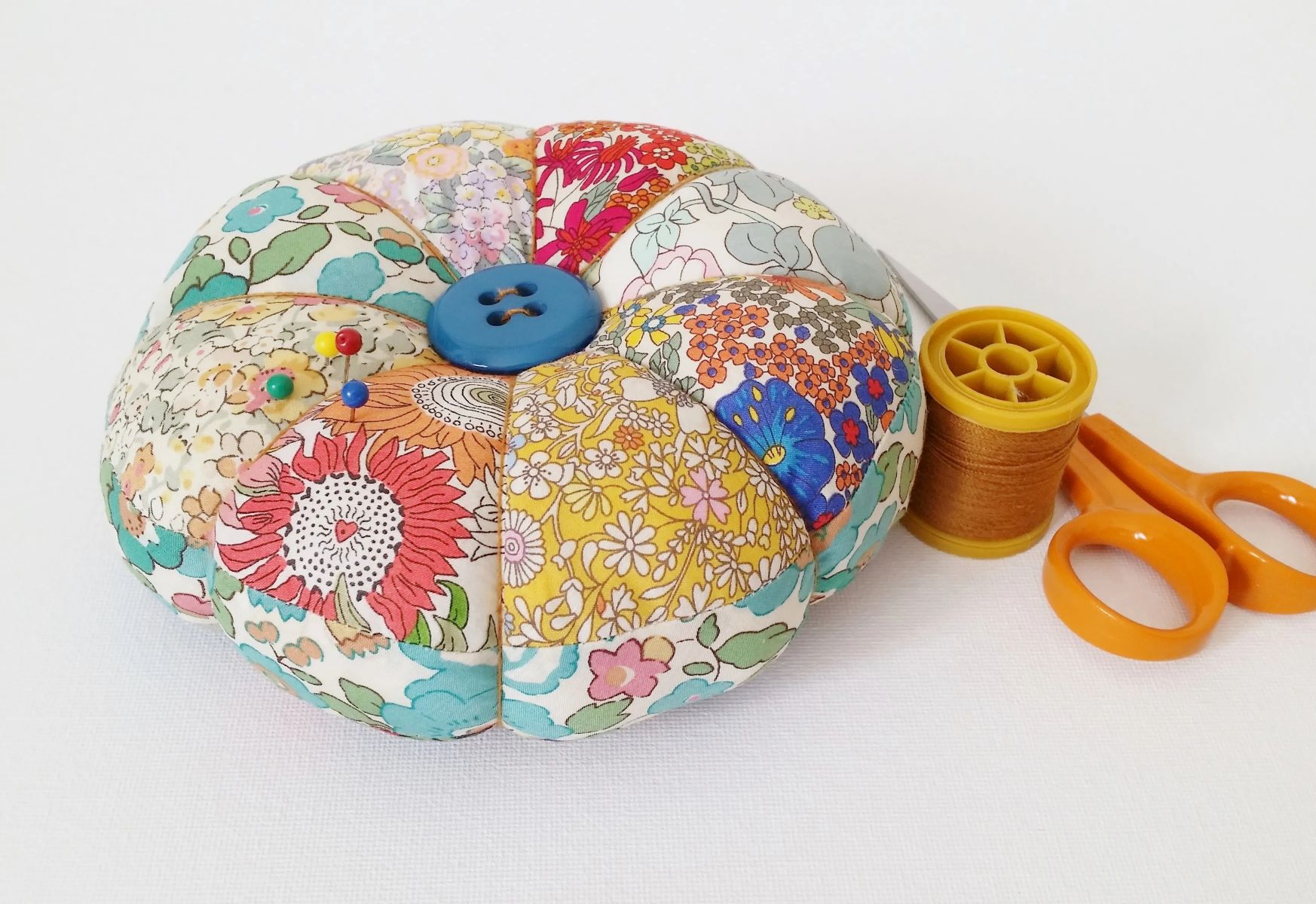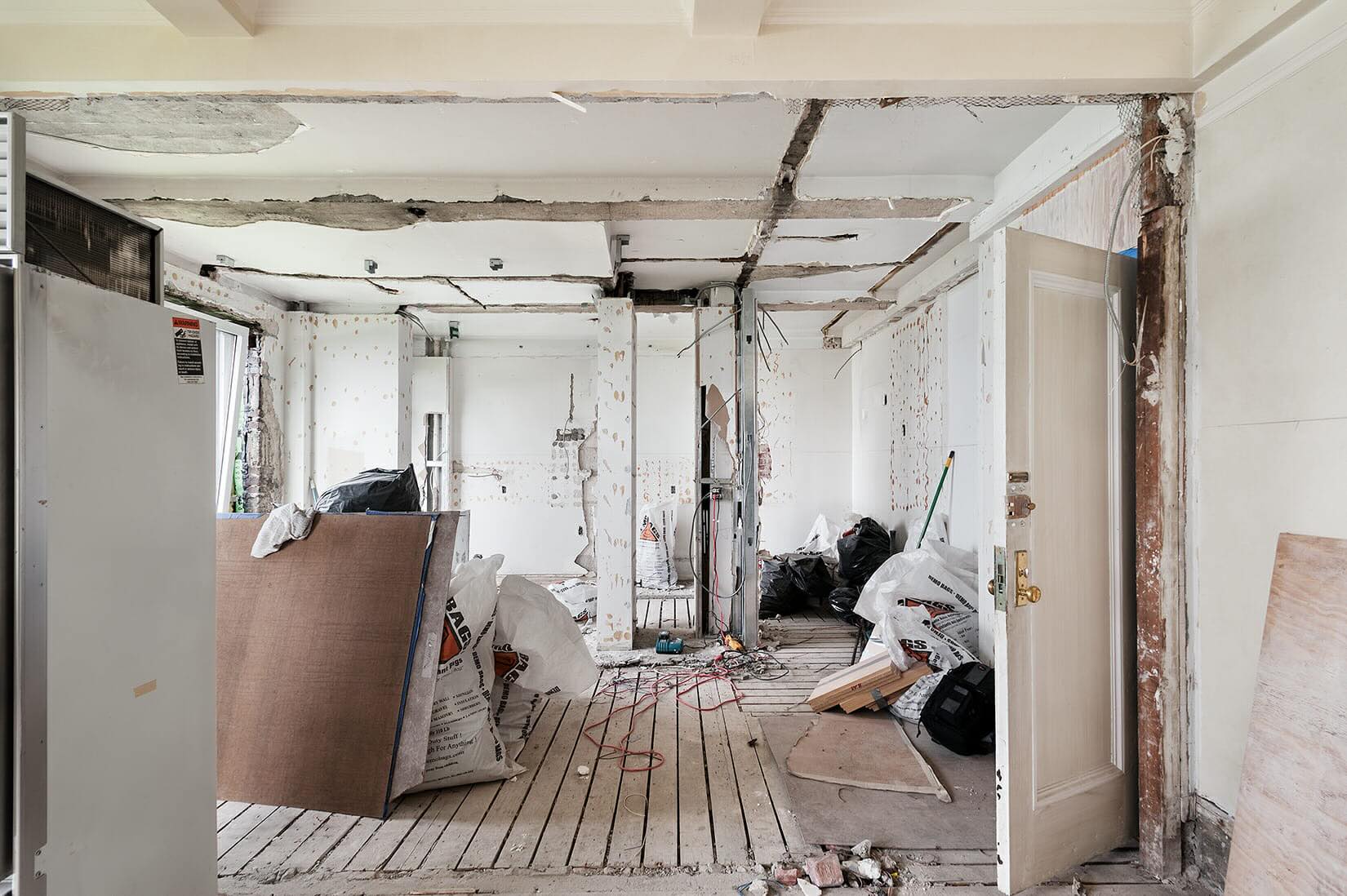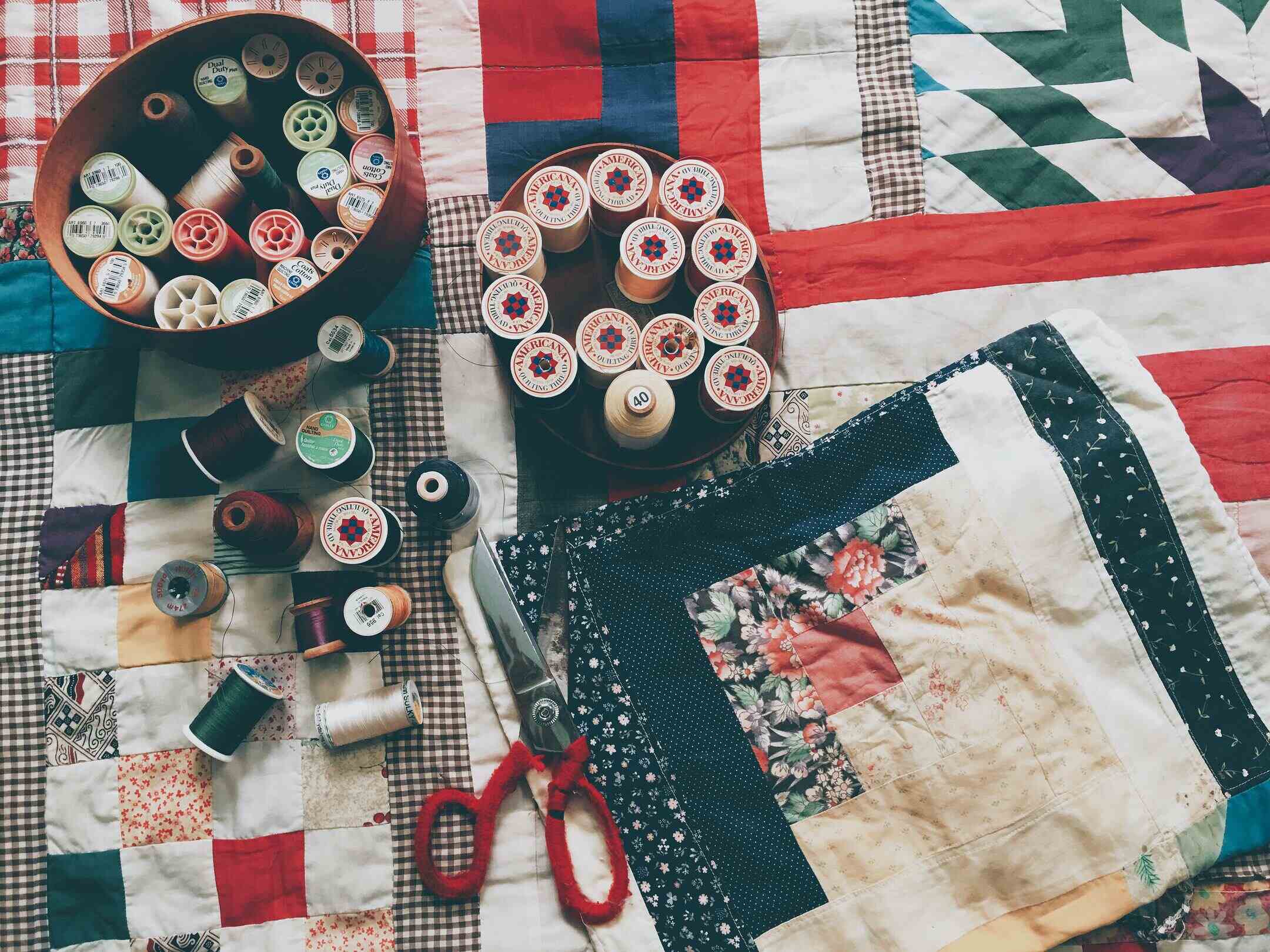Home>Create & Decorate>DIY & Crafts>Sewing Strips: Tips And Tricks You Need To Know
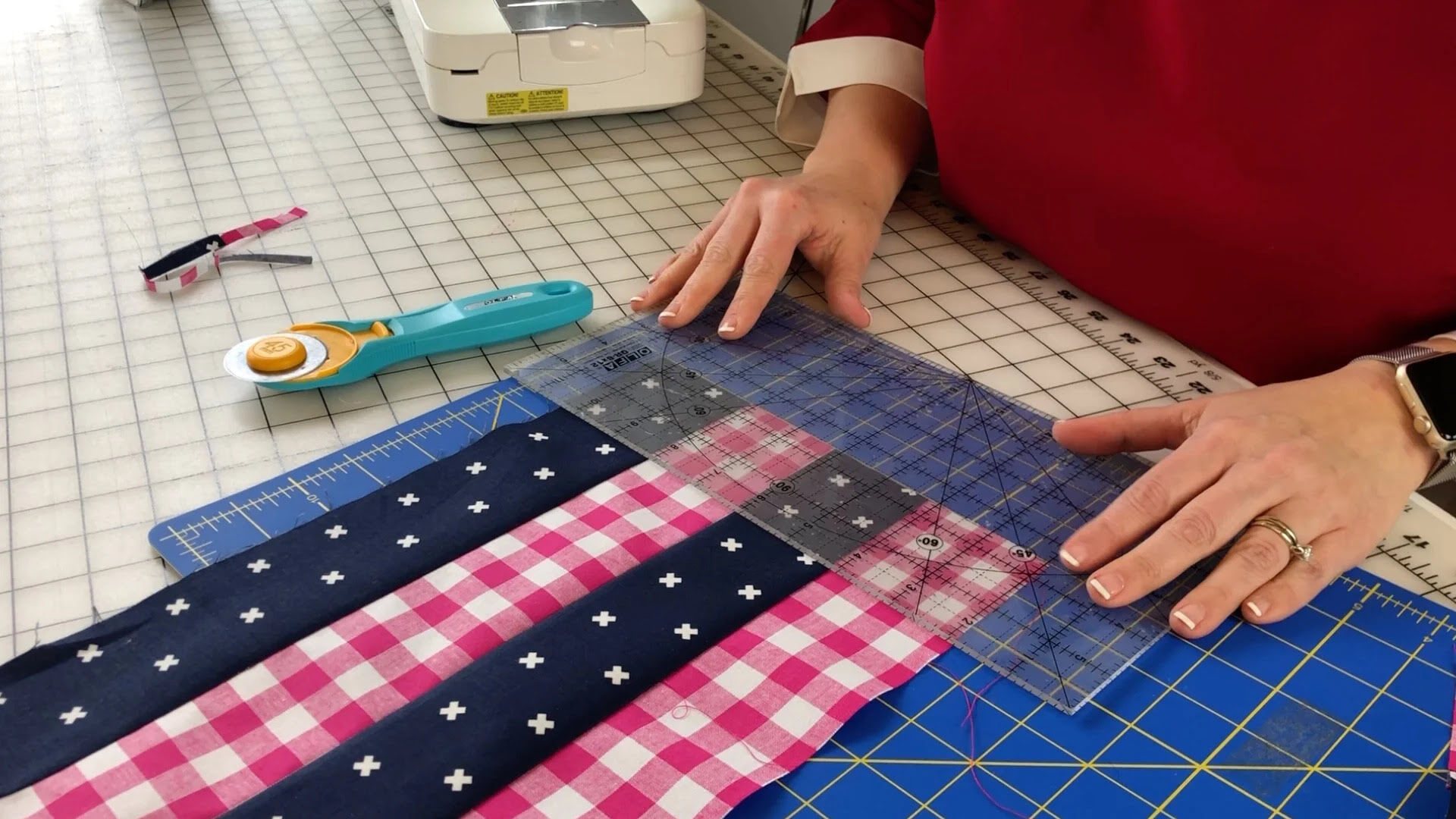

DIY & Crafts
Sewing Strips: Tips And Tricks You Need To Know
Published: February 15, 2024

Content Creator specializing in woodworking and interior transformations. Caegan's guides motivate readers to undertake their own projects, while his custom furniture adds a personal touch.
Discover essential tips and tricks for sewing strips in this comprehensive guide. Perfect for DIY & Crafts enthusiasts looking to enhance their skills.
(Many of the links in this article redirect to a specific reviewed product. Your purchase of these products through affiliate links helps to generate commission for Twigandthistle.com, at no extra cost. Learn more)
Introduction
Sewing with fabric strips is a versatile and enjoyable craft that allows you to create stunning projects with a unique visual appeal. Whether you're a seasoned quilter or a novice crafter, mastering the art of sewing strips can open up a world of creative possibilities. From vibrant quilts to stylish accessories, the use of fabric strips can breathe new life into your DIY projects.
In this comprehensive guide, we will delve into the essential tips and tricks for working with fabric strips, empowering you to elevate your sewing skills and embark on exciting new projects. From selecting the right fabric strips to mastering sewing techniques and tackling challenging bias strips, this article will equip you with the knowledge and confidence to take your sewing endeavors to the next level.
So, grab your sewing supplies and prepare to embark on a journey through the wonderful world of fabric strips. Whether you're drawn to the timeless charm of traditional quilting or the modern allure of contemporary fabric crafts, the insights and techniques shared in this guide will serve as valuable tools in your creative arsenal. Let's dive in and explore the fascinating realm of sewing with fabric strips, where innovation and tradition converge to inspire beautiful creations.
Choosing the Right Fabric Strips
Selecting the appropriate fabric strips is a crucial first step in any sewing project. The type of fabric, its pattern, and its color scheme can significantly impact the overall aesthetic and durability of your creation. Here are some essential considerations to keep in mind when choosing fabric strips for your sewing endeavors:
-
Fabric Type: The type of fabric you choose will depend on the specific project you have in mind. For quilting projects, cotton fabric strips are a popular choice due to their versatility and ease of handling. Cotton provides a stable and durable base for quilting, allowing for precise stitching and long-lasting results. Alternatively, if you're crafting accessories or home decor items, you might explore the use of linen, denim, or even specialty fabrics like batiks or flannels to achieve the desired texture and visual impact.
-
Color and Pattern: The color and pattern of your fabric strips play a pivotal role in the overall design of your project. Consider the theme and mood you wish to convey through your creation. For a vibrant and eclectic look, opt for a mix of bold, contrasting colors. If you're aiming for a more subdued and harmonious aesthetic, a coordinated color palette or a specific pattern theme, such as florals or geometrics, can help achieve the desired effect.
-
Quality and Durability: When selecting fabric strips, prioritize quality and durability. Ensure that the fabric is of good quality, with a tight weave and minimal fraying. This is especially important for projects that will undergo frequent use or laundering. Investing in high-quality fabric strips will not only enhance the visual appeal of your creation but also contribute to its longevity.
-
Pre-Cut Strips vs. Cutting Your Own: Depending on your project and personal preference, you can choose between pre-cut fabric strips, commonly available in standardized widths such as 2.5" or 5", or cutting your own strips from fabric yardage. Pre-cut strips offer convenience and uniformity, while cutting your own strips allows for greater flexibility in customizing the width and length to suit your specific design requirements.
By carefully considering these factors, you can ensure that the fabric strips you choose align with the vision you have for your sewing project. Whether you're aiming for a classic, timeless look or a bold, contemporary statement, the right fabric strips will serve as the foundation for your creative expression.
Cutting and Preparing Your Strips
Before diving into your sewing project, it's essential to ensure that your fabric strips are accurately cut and meticulously prepared. This foundational step sets the stage for seamless stitching and impeccable results. Here's a detailed exploration of the cutting and preparation process:
Accurate Measurements
Begin by measuring and marking your fabric with precision. Whether you're using pre-cut strips or cutting your own from yardage, accuracy is paramount. Use a clear ruler and a rotary cutter for straight, clean edges. Pay close attention to the width and length of each strip, adhering to your project's specifications.
Grain Alignment
Aligning the fabric strips with the grain is crucial for maintaining stability and preventing distortion during sewing. The lengthwise grain offers optimal strength and minimal stretch, making it ideal for borders and structural elements. Crosswise grain, on the other hand, provides flexibility and drape, suitable for piecing and intricate designs. By aligning your strips with the appropriate grain, you lay the groundwork for a well-structured and visually appealing creation.
Seam Allowance
When cutting your fabric strips, factor in the seam allowance required for your specific sewing project. Whether it's a standard ¼-inch allowance for quilting or a customized allowance for other crafts, accounting for this extra fabric ensures that your strips will seamlessly integrate into the overall design without compromising the intended dimensions.
Pre-Washing and Pressing
Depending on the type of fabric you're using, pre-washing your strips can prevent potential shrinkage and color bleeding. This step is particularly important for projects that will undergo washing or require precise sizing. Additionally, pressing your fabric strips with a hot iron ensures a smooth, wrinkle-free surface, facilitating accurate piecing and professional-looking results.
Organization and Labeling
As you prepare your fabric strips, organize them systematically and label them accordingly. This practice streamlines the sewing process, minimizing confusion and potential errors. Whether you use color-coded tags, adhesive labels, or a simple notation system, clear identification of your strips will enhance efficiency and precision as you progress through your project.
By meticulously attending to the cutting and preparation of your fabric strips, you establish a solid foundation for a successful sewing endeavor. This attention to detail sets the stage for smooth and enjoyable stitching, allowing your creativity to flourish as you bring your vision to life.
Sewing Techniques for Strips
Mastering essential sewing techniques is pivotal in achieving professional-looking results when working with fabric strips. Whether you're piecing together a quilt top, creating decorative borders, or assembling fabric strips for a unique project, employing the right sewing techniques is crucial. Here's a comprehensive exploration of the fundamental sewing techniques for fabric strips:
Straight Stitching
Straight stitching is the cornerstone of sewing with fabric strips. Whether you're using a sewing machine or opting for hand stitching, maintaining a consistent straight stitch is essential for securing the strips together. When using a sewing machine, align the fabric strips with precision, ensuring that the edges are even and the seam allowance is maintained. For hand stitching, employ a sharp needle and high-quality thread, and use a thimble to protect your fingers as you work through the layers of fabric.
Chain Piecing
Chain piecing is a time-saving technique that involves sewing multiple fabric strips in a continuous chain without cutting the threads between them. This method streamlines the sewing process, allowing for efficient stitching and minimizing thread waste. To chain piece, feed the fabric strips through the sewing machine one after the other, pausing briefly between each strip to maintain a consistent seam allowance. Once the chain is complete, snip the threads to separate the individual segments, and press the seams for a neat finish.
Topstitching
Topstitching adds a professional touch to fabric strips, enhancing their visual appeal and structural integrity. Whether you're accentuating a quilt border or embellishing a fabric project, topstitching along the seams can provide a polished look. Utilize a longer stitch length and a coordinating thread color to create a visually striking effect. When topstitching, guide the fabric strips evenly under the presser foot, ensuring smooth and precise stitching along the edges.
Decorative Stitching
Incorporating decorative stitching techniques can elevate the aesthetic appeal of fabric strips, adding intricate patterns and textures to your sewing projects. Experiment with decorative stitches available on your sewing machine, such as scallops, waves, or geometric motifs, to infuse your fabric strips with artistic flair. These decorative elements can transform simple fabric strips into captivating design features, enhancing the overall impact of your creation.
By mastering these essential sewing techniques for fabric strips, you can embark on your sewing projects with confidence and precision. Whether you're a seasoned seamstress or a novice crafter, honing these skills will empower you to bring your creative visions to fruition, resulting in beautifully crafted fabric strip projects that captivate and inspire.
Tips for Piecing Strips Together
Piecing fabric strips together is a fundamental aspect of numerous sewing projects, particularly in quilting and patchwork. The precision and care with which you join the strips significantly impact the overall appearance and structural integrity of the finished piece. Here are invaluable tips to ensure seamless and professional-looking results when piecing fabric strips together:
1. Accurate Seam Allowance
Maintaining a consistent seam allowance is crucial for aligning and joining fabric strips with precision. Whether you opt for a standard ¼-inch seam allowance or a customized measurement, adherence to this critical parameter ensures that the strips fit together seamlessly, creating a cohesive and visually appealing composition.
2. Pressing Seams
Pressing the seams after piecing fabric strips is essential for achieving flat, smooth, and visually pleasing results. Use a hot iron to press the seams open or to one side, depending on your project's requirements. This step not only enhances the overall appearance of the fabric strips but also facilitates the alignment of subsequent strips, contributing to the professional finish of the final piece.
3. Nesting Seams
When piecing together multiple fabric strips, consider nesting the seams to minimize bulk and achieve a neat, flat seam junction. By alternating the direction of adjacent seam allowances and ensuring they interlock like puzzle pieces, you can reduce excess fabric bulk and create a seamless transition between the joined strips.
Read more: Mastering Dye Techniques: Tips & Tricks
4. Pinning and Alignment
Prior to stitching, carefully align the fabric strips, ensuring that the edges and seam lines match accurately. Secure the alignment with pins or fabric clips to prevent shifting during sewing. This meticulous approach to alignment minimizes distortion and irregularities, resulting in a cohesive and visually pleasing composition.
5. Continuous Chain Piecing
For projects involving a large number of fabric strips, consider employing the continuous chain piecing technique. This method streamlines the piecing process by feeding the strips through the sewing machine in a continuous chain without cutting the threads between them. Not only does this approach save time, but it also promotes a consistent seam allowance and efficient workflow.
By incorporating these tips into your fabric strip projects, you can elevate the quality and visual appeal of your creations. Whether you're piecing together strips for a quilt, a decorative border, or any other sewing endeavor, attention to these details will contribute to the seamless integration of fabric strips and the overall success of your project.
Tricks for Working with Bias Strips
Working with bias strips presents unique challenges and opportunities in sewing projects. Bias strips, cut on a 45-degree angle to the fabric grain, offer flexibility and drape, making them ideal for curved edges, piping, and intricate design elements. However, handling bias strips requires specific techniques to ensure precise construction and minimize stretching. Here are invaluable tricks for effectively working with bias strips:
1. Stabilizing the Bias
When working with bias strips, stabilizing the fabric is essential to prevent excessive stretching and distortion. Consider using a starch spray or fabric stabilizer to reinforce the bias strips, enhancing their manageability and structural integrity. By stabilizing the fabric, you can minimize the challenges associated with handling bias strips and achieve more controlled and accurate results in your sewing projects.
2. Gentle Handling
Due to the inherent stretchiness of bias strips, gentle handling is paramount to avoid distorting the fabric. When cutting, pinning, and sewing bias strips, exercise caution to prevent unnecessary tension that can lead to misshapen edges and uneven seams. Approach the fabric with a light touch, allowing the natural flexibility of the bias to work in your favor while maintaining control over the construction process.
3. Diagonal Seam Joining
When joining bias strips to create longer lengths or intricate designs, employing diagonal seam joining techniques can minimize bulk and ensure smooth transitions between the strips. By aligning the strips at a 45-degree angle and sewing them together with a diagonal seam, you can seamlessly merge the bias strips while reducing excess fabric thickness at the seam junctions. This method results in a more polished and visually appealing outcome.
4. Pressing with Care
Proper pressing is crucial when working with bias strips to maintain their shape and prevent distortion. Use a low-heat setting on your iron and gently press the bias strips, taking care not to stretch the fabric during this process. Consider using a pressing cloth to protect the fabric and ensure even heat distribution. By approaching pressing with attentiveness and precision, you can preserve the natural drape and flexibility of the bias strips while achieving crisp, well-defined edges.
5. Bias Tape Makers
Utilizing bias tape makers can streamline the process of creating bias strips, offering a convenient and efficient way to fold and press the fabric into uniform bias tape. These specialized tools come in various sizes to accommodate different widths of bias strips, allowing for consistent and professional-looking results. By incorporating bias tape makers into your sewing toolkit, you can simplify the preparation of bias strips and enhance the quality of your sewing projects.
By implementing these tricks for working with bias strips, you can navigate the intricacies of handling bias fabric with confidence and finesse. Whether you're embellishing garments, adding decorative trims, or incorporating curved elements into your sewing projects, mastering these techniques will empower you to harness the unique properties of bias strips and elevate the craftsmanship of your creations.
Finishing and Pressing Your Strip Projects
As you near the completion of your fabric strip project, the crucial steps of finishing and pressing play a pivotal role in ensuring a professional and polished outcome. These final touches not only enhance the visual appeal of your creation but also contribute to its structural integrity and longevity. Let's delve into the essential aspects of finishing and pressing your strip projects to achieve impeccable results.
Trimming and Squaring
Before proceeding with the finishing and pressing phase, it's essential to trim and square your strip project. Use a clear ruler and rotary cutter to trim the edges, ensuring that the project is perfectly squared and all excess fabric is removed. This meticulous step sets the stage for precise finishing and facilitates uniform pressing across the entire project.
Seam Pressing
Carefully press the seams of your strip project to achieve flat, smooth, and visually appealing results. Whether you're working on a quilt, a decorative border, or any other fabric creation, pressing the seams open or to one side contributes to the overall professional finish. Use a hot iron and apply even pressure to ensure that the seams lay flat and the fabric retains a crisp appearance.
Final Pressing
Once the individual seams are pressed, proceed to give the entire strip project a final press. Lay the project on a spacious ironing surface and systematically press the entire surface, paying attention to any remaining wrinkles or creases. This comprehensive pressing ensures that the fabric strips are smooth and wrinkle-free, setting the stage for the final steps of finishing.
Edging and Binding
Depending on the nature of your strip project, consider edging or binding the raw edges to provide a clean and polished appearance. For quilts, binding the edges with coordinating fabric strips not only adds a decorative touch but also reinforces the edges for long-term durability. Alternatively, if your project involves decorative borders or accessories, neatly finishing the edges contributes to a refined and professional presentation.
Quality Inspection
Before considering your strip project complete, conduct a thorough quality inspection. Examine the seams, edges, and overall appearance of the project, ensuring that it meets your standards of craftsmanship. Address any irregularities or imperfections, and make any necessary adjustments to guarantee a flawless and visually stunning result.
By meticulously attending to the finishing and pressing of your strip projects, you elevate the quality and visual appeal of your creations. These final steps not only contribute to the immediate presentation of your project but also ensure its resilience and enduring beauty over time. With a keen eye for detail and a commitment to excellence, your strip projects will exude professionalism and artistry, captivating admirers and inspiring future sewing endeavors.
Conclusion
In conclusion, the art of sewing with fabric strips offers a rich tapestry of creative possibilities, allowing crafters to weave together stunning projects that blend tradition and innovation. From the careful selection of fabric strips to the meticulous preparation, precise stitching, and thoughtful finishing, every step in the process contributes to the beauty and longevity of the final creation.
As you embark on your sewing journey with fabric strips, remember that attention to detail and a spirit of creativity are your greatest allies. Whether you're piecing together a vibrant quilt, crafting decorative borders, or fashioning unique accessories, the tips and tricks shared in this guide serve as valuable companions, guiding you toward successful and gratifying outcomes.
By choosing the right fabric strips that align with your vision, mastering cutting and preparation techniques, and honing essential sewing skills, you lay the groundwork for seamless and enjoyable crafting experiences. Embrace the challenges and rewards of working with bias strips, and savor the satisfaction of bringing your creative visions to life with finesse and precision.
As you press and finish your strip projects, take pride in the craftsmanship and artistry that infuse each stitch and seam. Whether you're a seasoned quilter or a novice crafter, the journey of sewing with fabric strips is a testament to your dedication and passion for the art of creation.
So, gather your fabric strips, unleash your imagination, and let the rhythmic hum of the sewing machine or the gentle rhythm of hand stitching carry you into a world of boundless creativity. With each project, you refine your skills, express your unique style, and contribute to the rich tapestry of the crafting community.
As you bid farewell to this guide, remember that the world of fabric strips is a realm of endless inspiration and discovery. Whether you're drawn to the timeless allure of traditional quilting or the modern flair of contemporary fabric crafts, the journey of sewing with fabric strips is a celebration of artistry, innovation, and the enduring magic of handmade creations.

